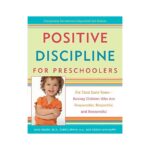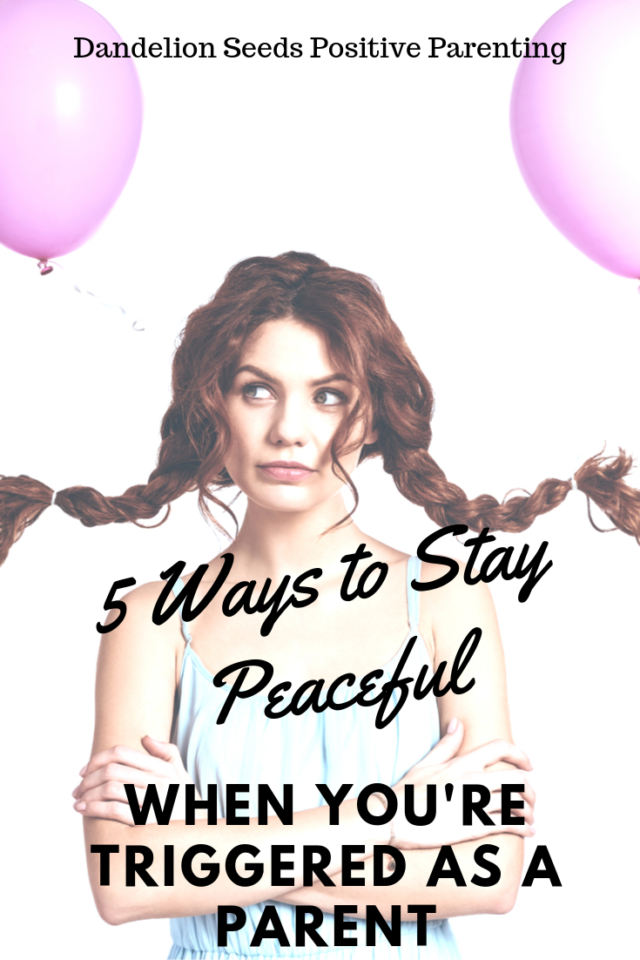
Sign in
Don't have an account with us? Sign up using the form below and get some free bonuses!


We were every cliché: she spilled her milk all over the table and was using her fingers to spread it into a big and messy design; I was already waaaay late making dinner. I was feeling anxious and frustrated, and struggling to be mindful of the positive parenting ideas from part one of this article. (Yep, I'm human, too.) Forget "don't cry over spilled milk"—I just wanted her to stop it.
Doing my best to manage my frustration but failing pretty miserably, I heard myself ask impatiently, "What are you doing?" It was a ridiculous question. My eyes work. I could see what she was doing. Fortunately, she overlooked my tone and simply responded, "I'm doing what the book said. I'm turning an 'oops' into something beautiful!" (afflinks) Oh. That's right! I taught her that positive outlook from a book, and I did it intentionally there in that gentle parenting-driven exchange (cough, cough, ahem...I wish).
As it turns out, I had just gotten lucky. As expert Kelly Matthews of A Place for You Early Childhood Consulting suggests (and as she learned from her mentor, Deb Curtis), "Don't get mad, get curious!" Wow, what a paradigm shift, and what a wonderful mantra for the heat of the moment! I'll admit that when I'm in a tough place mentally, my default is sometimes frustration. When I'm in that mental state, I don't always assume the best of my child's intentions. That's my problem, though, and not hers. Oftentimes, she's simply exploring something in an age-appropriate way* that my adult brain has forgotten; wondering how something works rather than trying to break it.
Before you think I'm saying you should never be angry or frustrated, let me clarify. All your emotions are valid. Anger and frustration serve a necessary purpose—they're your built-in warning system that a boundary has been crossed, no matter the source. In addition, anger often covers up other emotions that warrant exploring, if you can imagine anger as the tip of a complex iceberg**. It's critical that you be able to express your anger in productive ways. So, the questions become how you process and express it, and what you can do to maintain gentle parenting even when you're upset.

In the toughest moments, when gentle parenting seems impossible, you can try a few things to ground yourself:
Take two seconds and remember those wise words: "Don't get mad, get curious." Consider the possibility that you might be missing some information that would change your perspective. Case in point: my girl's attempt to "fix" her spill by turning it into art. Incidentally, after writing this article, I read the best chapter I've ever read about anger and other big feelings. Although I wish the book's title were different, since, in my opinion, the information applies waaaaay beyond little kids, Positive Discipline for Preschoolers is an incredible resource. It's hugely insightful and offers a host of helpful ideas for you and your child.
I can't overestimate the power of looking into your child's eyes. Before you say anything at all, get on your child's level and look directly into his gaze. It's much easier to feel upset with another person when you're in fight or flight mode and looking at a mess / the back of your child's head / anything that doesn't drive empathy. Conversely, it's much easier to feel compassion toward another person when you're looking him in the eye. Drs. Seigel and Bryson suggest getting even lower than your child's eye level to remove the intimidation factor (details in their book).
This type of "look me in the eye" is completely different than how many of us were raised, where a threat was attached to it. This is an effort to rebuild connection, regardless who was wronged in the tough situation through which you're working. Genuine, sincere eye contact "in the moment" can diffuse all sorts of negativity. Moreover, eye contact on a regular basis is connection technique that lasts. Practice it genuinely and authentically. The more you practice really seeing your child and connecting visually in the good moments, the more of a default it will be in the bad ones.
Now, it's (maybe) time to say something to your child. Some of us naturally yell when we're upset. Others of us, don't. Either way, we all have a "mad voice," and our kids recognize it. For the record, I don't write "inside voice" to sound patronizing; rather, I use it because we've all heard it, so it's easy to remember. No matter your volume, when you're ready to talk, speak to your child much more quietly than you normally would. If you're thinking, "...but my kids don't listen unless I yell," I'd challenge you to rock their worlds—and get their attention—by doing the opposite of what you normally do. Even if you're naturally soft spoken, whispering (or using a quiet voice) takes intimidation off the table and helps you connect to your child.
From an evolutionary perspective, yelling raises adrenaline and helped earlier humans prepare their bodies to fight. We certainly weren’t going to reason with a saber tooth tiger. So, to the extent that yelling can actually increase your anger*** rather than quell it, whispering can automatically reduce the adrenaline that fuels it. A quieter voice than usual, then, makes you calmer and may reduce your child's resistance to what you're saying. Win/win. Note, if you're seething and whisper-yelling through gritted teeth, skip to idea #4 and try this again when you're ready. Ground yourself first. See the footnotes for the science behind this.
Too triggered to connect? Rather than sending your child away (which I don't advocate regardless), let her know that you're upset and that you need to calm down. It's okay to use those words; you're modeling real feelings and the need we all have for space to process. Your tone can reflect your feelings here; model authenticity. Make sure she's in a safe place and assure her that you're coming back soon. Of course, stay within a safe distance if your child is young.
Taking time to compose yourself is always preferable to saying or doing something you'll regret later. Avoid labeling your reason for distance as being because of something your child did (which can result in shame); rather, model it as a healthy way to cool off when you're too triggered to speak calmly. "I feel..." statements work well here (as in, "I feel frustrated and need to go into the bedroom to calm down, but I'll be back in a minute."). For little kids who don't yet understand time as we do, it helps to give them a frame of reference they understand, such as, "I'll be back by the time you could sing the ABC song three times." When you're in a calmer place, go back to your child and try idea #3 again.
It's easy to stay mad about a situation when you're still looking right at it. Maybe something your child did triggered you; maybe he said something that pushed you over the edge (or maybe, just maybe, the issue was just yours but it manifested in him). If you're still feeling triggered, invite your child to another location to discuss what happened and how to improve things for the future.
Best case scenario, you head outside together to talk about it. Fresh air is amazing medicine. Or, your approach might simply be, using collaborative language, "Let's go sit on the floor together in the living room and work through this." (Unusual locations can give you a new perspective mentally, strange as it sounds.) Physically removing yourself from the place where you had your most visceral reaction can be tremendously helpful for your psyche. It's literally neutral territory. A change of scenery can help you see more clearly before you work through whatever happens next. Refrain from creating a "danger zone" where you simply move your child elsewhere for so-called punishment; this is intended to be a safe space for you both.
Extend grace to your child, just as you hope others will for you. Oh, yeah. And breathe. Anger has a place in parenting, just like it does in all relationships. Fortunately, a strong connection can overcome the tough moments. And with gentle parenting, you can demonstrate effective and loving ways to help your kids navigate it in their own lives.
_____________________________________________________________
**Source: https://www.gottman.com/blog/the-anger-iceberg/
*** Source: http://www.apa.org/monitor/nov04/hormones.aspx
